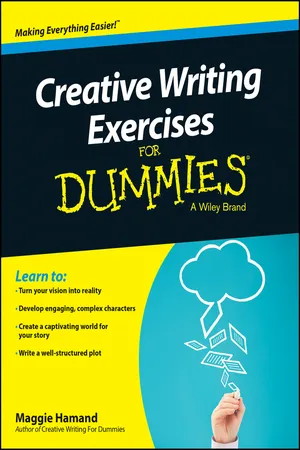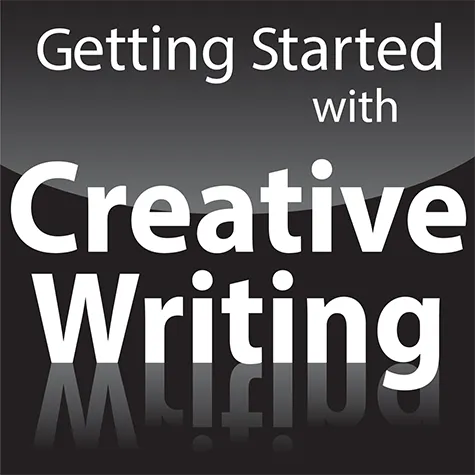
- English
- ePUB (mobile friendly)
- Available on iOS & Android
Creative Writing Exercises For Dummies UK
About this book
Creative Writing Exercises For Dummies is a step-by-step creative writing course designed to hone your craft, regardless of ability. Written by the founder of the Complete Creative Writing Course at London's Groucho Club, this activity-based guide walks you through the process of developing and writing in a wide range of genres including novels, short stories and creative nonfiction. The book includes writing prompts, exercises, mind maps, flow charts and diagrams designed to get your ideas flowing. You'll get expert guidance into character development, plot structure and prose, plus extensive insight into self-editing and polishing your work.
Whether you're a new writer with a seed of an idea you would like to develop, or are looking to strengthen your creative writing skills, this book has you covered. Covering every aspect of narrative, from setting initial goals to formatting a manuscript, Creative Writing Exercises For Dummies provides the tools and instruction you need to make your story the best it can be.
- Learn to spark your imagination and sketch out ideas
- Create compelling characters and paint a picture with description
- Develop your plot and structure and maintain continuity
- Step back from your work and become your own ruthless editor
The rise of e-books has opened up the publishing world, even to non-established writers. If you have a story you're dying to tell but aren't sure how, Creative Writing Exercises For Dummies is the clear, concise solution you need.
Frequently asked questions
- Essential is ideal for learners and professionals who enjoy exploring a wide range of subjects. Access the Essential Library with 800,000+ trusted titles and best-sellers across business, personal growth, and the humanities. Includes unlimited reading time and Standard Read Aloud voice.
- Complete: Perfect for advanced learners and researchers needing full, unrestricted access. Unlock 1.4M+ books across hundreds of subjects, including academic and specialized titles. The Complete Plan also includes advanced features like Premium Read Aloud and Research Assistant.
Please note we cannot support devices running on iOS 13 and Android 7 or earlier. Learn more about using the app.
Information
Getting Started with Creative Writing Exercises

- Set yourself some simple targets that you can use to help you make progress.
- Look at ways to define the theme of your writing project and to keep yourself motivated.
- Find useful tools and techniques to get your imagination going and inspire you on your way.
- Understand the creative process, with plenty of tips to get you started and support you on your writing journey.
Preparing to Create Your Written Masterpiece



Planning for the Writing Journey
Setting your writing goals
- Task targets: Such as developing a character, finishing a chapter or planning a scene.
- Time targets: A certain number of writing sessions of fixed length, such as three half-hour sessions a week.
- Word targets: A certain number of words or pages, such as 500 words or three pages per week.
Locating the appropriate genre
- What’s the rough length of books in your chosen genre?
- Do they tend to be written from a first-person or a third-person viewpoint and do they contain one or several points of view? (Check out Chapter 8 for more details on point of view.)
- Are they primarily plot driven (that is, the story is the most important element, and the characters mainly exist to fulfil a role within it) with lots of action (see Chapter 12), or character driven (the characters’ choices and actions drive the story) with lots of internal reflection?
- Is the language simple and direct with relatively short sentences and paragraphs, or are the sentences more complex with more detailed description, including similes and metaphors? (Chapter 15 has loads of info on these figures of speech and Chapter 11 covers using all the senses for intense descriptions.)
Table of contents
- Cover
- Title Page
- Table of Contents
- Introduction
- Part I: Getting Started with Creative Writing Exercises
- Part II: Realising That Character Is Everything
- Part III: Painting the Picture with Description
- Part IV: Developing Your Plot and Structure
- Part V: Polishing Your Product: Revising and Editing
- Part VI: The Part of Tens
- About the Author
- Cheat Sheet
- End User License Agreement



